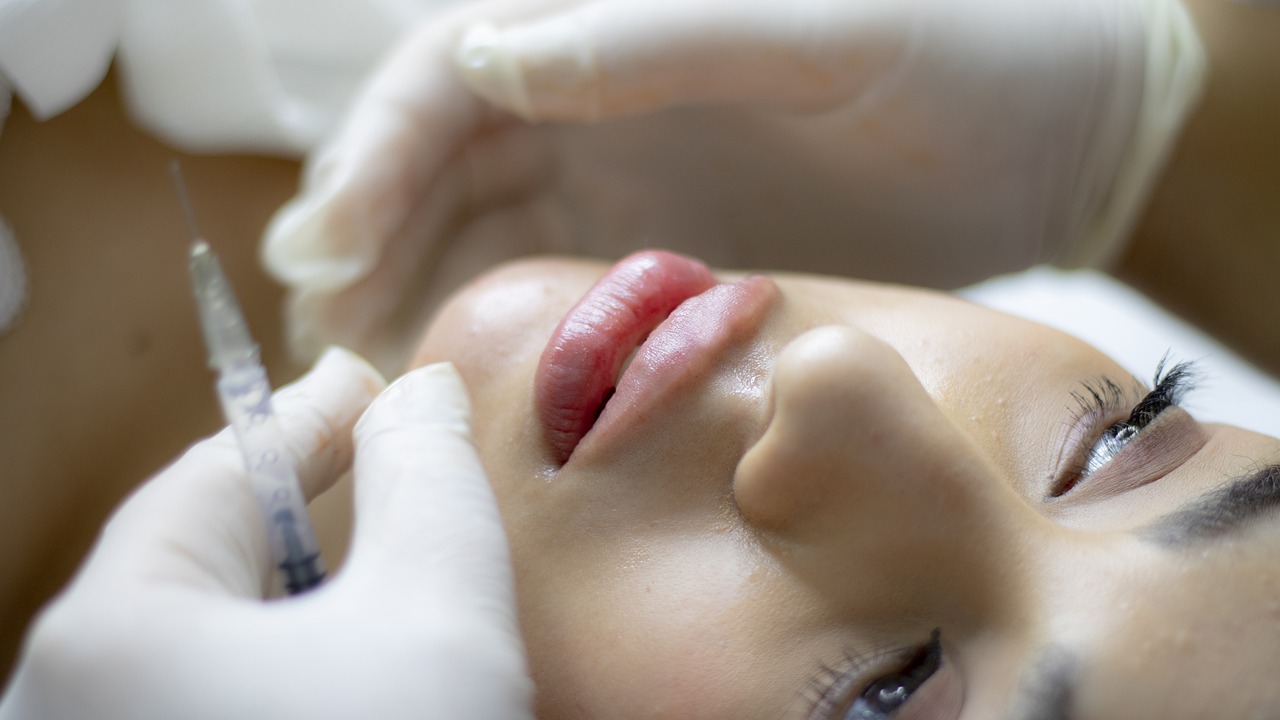
Lip fillers are injection-based treatments that temporarily add volume and fullness to lips. The most common type of lip filler is hyaluronic acid, which lasts anywhere from six to twelve months. Besides being safe to use, fillers are an excellent way to enhance the look and the volume of your lips.
After seeing many celebrities use them, you might wonder if fillers can help you too. Especially if you’re worried about your lips appearing thin. Below, we cover everything you should know about how lip fillers work and if they’re right for you.
Benefits of Lip Filler
So, is lip filler all that it’s cracked up to be?
As it turns out, the answer is yes. And it’s only improving with time. We’ll dig into the details in just a moment. Before we do, though, we wanted to give you some of the main reasons why people love lip filler:
- It’s long-lasting but not permanent. If you decide you want a new treatment (or none at all), you merely have to wait for the filler to dissipate naturally.
- You can get the perfect amount for you. Since the filler is injected, you can adjust how much you get and achieve the most appealing volume.
- Allergic reactions are unlikely. Unlike many other fillers and implants, hyaluronic acid is a naturally occurring substance. Allergic reactions to lip filler are rare as a result.
How Lip Fillers Work
Lip fillers are a form of injection-based lip augmentation. Most of them consist of hyaluronic acid, which adds volume to your skin.
You might wonder what hyaluronic acid is and whether it’s safe to use. After all, injecting acid into your lips can sound scary at first. As it turns out, your body naturally produces hyaluronic acid. It’s most common around the eyes and joints, where it helps retain moisture.
This moisture-retention quality is what makes the substance excellent for filling lips.
While most lip implants only add volume artificially with silicone, lip fillers retain your body’s moisture in the lips. Meaning that lip filler can appear more natural-looking than lip implants.
The biggest downside of lip fillers is the need for regular injections – most fillers only last six to twelve months, so you’ll need to make occasional trips to a medical aesthetics clinic to keep your lips looking full.
Thankfully, the process isn’t too invasive and rarely takes long.

What is getting lip filler like?
The lip filling procedure is much more straightforward than you might imagine.
Visiting a cosmetic clinic or centre offering the treatment will start with a conversation. Specifically, the staff will ask about your cosmetic goals to tailor the treatment to your desires. Find the right clinic, and you can get a consultation to kick things off.
When going in for the procedure, you may receive a numbing medication for your lips. This is to mitigate the discomfort of the injections.
The lips are a sensitive areas so most people opt for numbing cream but in addition to this hyaluronic acid fillers are mixed with lidocaine (a numbing agent) already. So, your lips will get extra numbing during the procedure.
Multiple injections on both lips are typically necessary or your practitioner might use a cannula which means there will be less injection points needed. The specialist handling your treatment will massage around your mouth throughout the procedure. While it might feel funny, this helps the filler spread.
Afterwards, the staff will give you some instructions on post-procedure care. They might even apply some medicated lip balm for you.
And that’s it, then you’re done! Until your next session, of course.
As you can imagine, lip filling is also a far less invasive procedure than lip implants. No incision required, just injections. The trade-off is that lip fillers require regular visits. You’ll need to get injections a few times a year in most cases. Conversely, lip implants can last years.
What to Expect After Getting Lip Filler
The lip filling procedure should only take 15 to 45 minutes of your time.
Afterwards, you may be given a cold pack to place on your lips. The cold helps with the swelling that immediately follows injections.
Swelling usually lasts 24-48 hours but can linger up to a week. There may be some pain, but it’s generally quite mild.
Additionally, here are some guidelines you should follow for the 24 hours post-procedure:
- Don’t wear make-up on your lips.
- Avoid strenuous exercise.
- Don’t use rough brushes or exfoliating agents on your mouth.
All of the above can detrimentally affect your lips’ healing process, primarily by increasing swelling. While not hazardous, you should still avoid them for the best results.
Research has shown that filler can also cause small bumps or nodules around the injection sites. If you experience this, contact your clinic for assistance.

What Do People Use Lip Filler to Treat?
There are a few different ways that lip filler can enhance your lips. And you might be surprised at just how versatile it is.
Here’s what lip filler can help with:
- Thin lips – Lip filler can make thin lips look voluptuous. They add volume to compliment and accentuate the natural shape of your mouth. Thin lips are the most common motivation for getting lip filler injections.
- Loss of volume – The hyaluronic acid of lip filler enhances water retention. So, in addition to making your lips appear fuller, fillers also make them look and feel moister.
- Smoker lines – Smoker lines are the long, fine vertical wrinkles leading to the mouth. Lip fillers can be used to fill these lines.
Lip filler can enhance the shape of your lips but can’t change it. If you want to change the look of your mouth shape dramatically, you’ll need lip implants or cosmetic surgery.
Risks of Using Lip Filler
While it’s safe for the most part, lip filler does carry some risks.
According to the NHS, here are some of the issues you might experience:
- Swelling, pain, and tenderness
- Infection
- Bumps or lumpiness at the injection site
- Lip asymmetry
- Accidental scarring
The localised trauma of injections might also cause cold sores or blisters to reactivate.
Thankfully, severe adverse reactions are rare at clinics licensed to carry out lip filling procedures.
Conclusion
Filler is an excellent way to add volume and moisture to your lips. While the procedure might sound a little scary at first, it’s surprisingly quick and straightforward.
If you like how it looks, remember to schedule another visit. You’ll need to get injections a few times a year to maintain lip fullness.